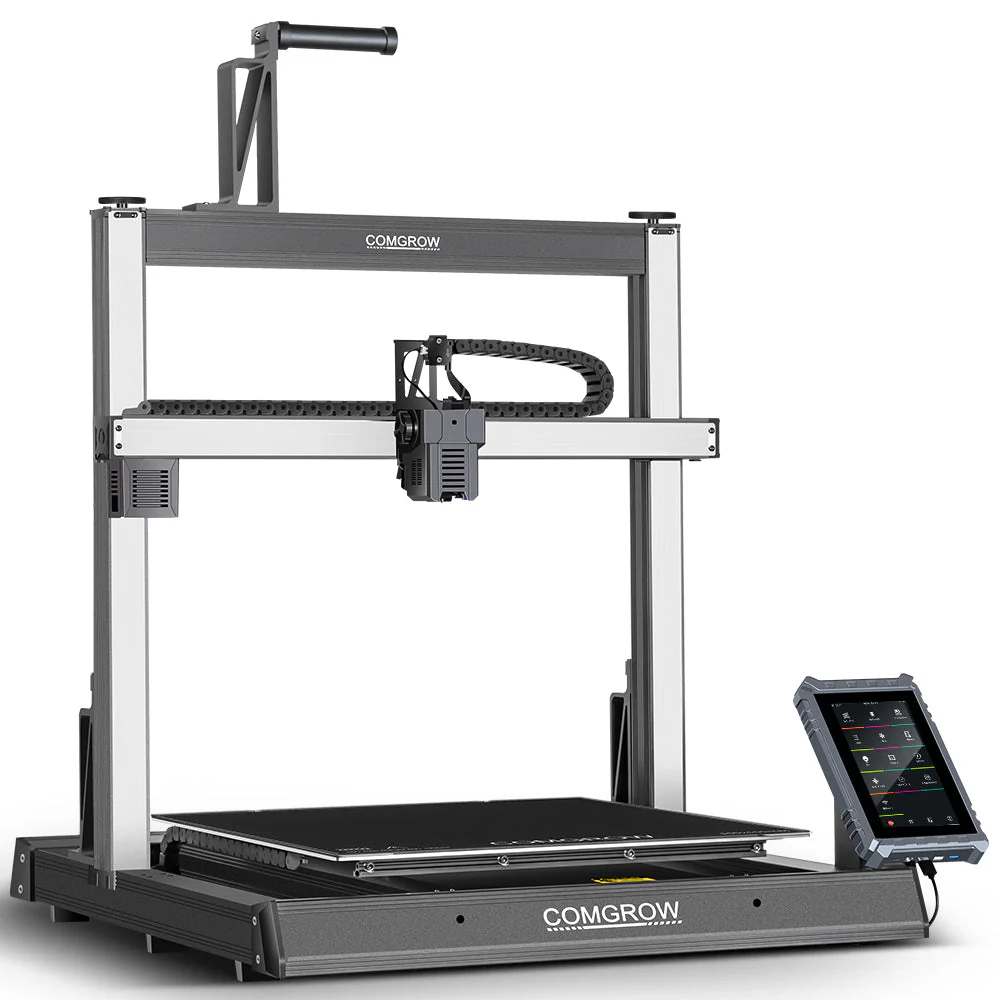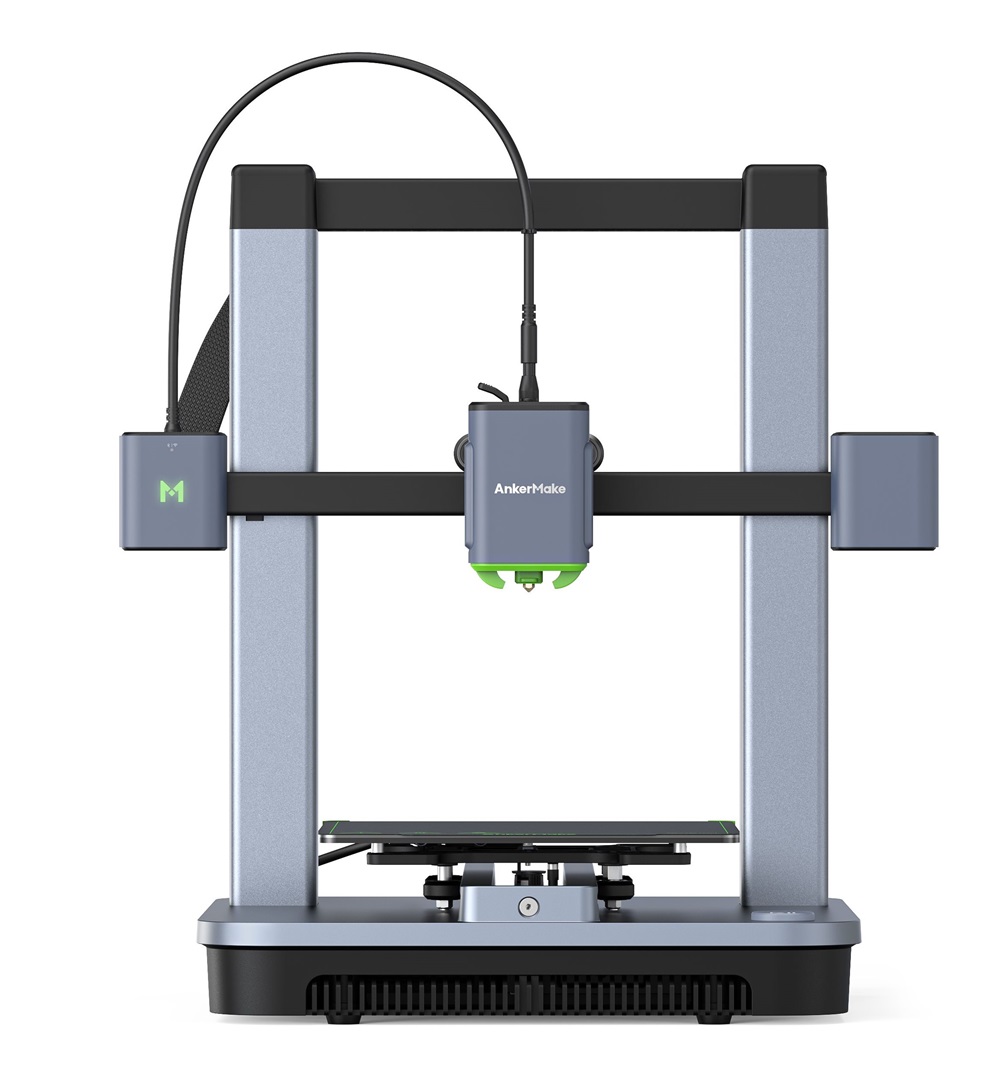Compare Comgrow T500 vs M5C
Comparison between the best 3D printers
Choose the best 3D printer at the best price. The cheapest 3D printers are here.
Buy a 3D printer here with 3D Fila.
 |
 |
|
| Model | Comgrow T500 |
M5C[BUY M5C] |
| Printing Material | Filament | Filament |
| Buy Filament for Sovol Comgrow T500 | Buy Filament forAnkerMake M5C | |
| Estimated price | $799,00 | $399,00 |
| Manufacturer | Sovol | AnkerMake |
| Release Year | 2024 | 2023 |
| Print Volume [mm] | 500x500x500 | 220x220x250 |
| Printer Size [mm] | 817x810x962 | 466x374x480 |
| Weight [kg] | 39 | 9,6 |
| Power Loss Recovery | YES | YES |
| Enclosed printer | NO | NO |
| Bed Leveling | Automatic | Automatic |
| Filament End Sensor | YES | YES |
| Bed type | Heated | Heated |
| Power supply system | Direct Drive | Direct Drive |
| Standard nozzle | 0,4 | 0,4 |
| Maximum Nozzle Temperature [°C] | 300 | 300 |
| Maximum Bed Temperature [°C] | 80 | 100 |
| Maximum printing speed [mm/s] | 500 | 500 |
| Filament holder | YES | YES |
| Camera for supervision | NO | NO |
| Recommended filaments | PLA, PETG, Fibra de Carbono, TPU | PLA, PETG, TPU, ABS, PA, PLA-CF, PETG-CF, PA-CF |
| Recommended slicers | Creality Print, Cura 5.0 ou superior, Prusa Slicer, Orca | AnkerMake Studio (macOS, Windows), Simplify3D, Ultimaker Cura, PrusaSlicer |
| Maximum Resolution [mm] | 0,1 | 0,1 |
| Processor | ||
| Display | 7'' IPS touchscreen, 60Hz | |
| Power Supply | 500 W | 350 W |
| Connectivity | Wi-Fi, USB-C, Bluetooth | |
| Operating systems | Windows, Linux e Macbook | |
| Date of registration in the system | 2024-07-18 | 2024-09-11 |
| Release date | 2024 | 2023 |
| Extra features | The Sovol Comgrow T500 stands out for its large print volume of 500x500x500 mm, ideal for large-scale projects. It has a direct extruder with a gear ratio of 6.5:1, speeds of up to 200 mm/s, and high-performance motors. The 7" touchscreen with Klipper software makes navigation easy. The 49-point automatic leveling ensures a perfect first layer. It also has a full metal hotend at 300°C, linear rails on all axes, and WiFi connectivity. | The AnkerMake M5 printer stands out for its impressive print speed, reaching up to 500mm/s. It features AI print monitoring, an integrated camera for creating timelapses, auto-leveling bed with pressure sensor, direct extruder, flexible PEI-coated build plate, and Wi-Fi and USB-C connectivity. Assembly is quick and easy, and the printer is designed to deliver high print quality and ease of use. |
| Support for multiple colors and materials (AMS and CFS) | NO | NO |
Notes * |
||
| Cost-benefit | 7 / 10 | 7 / 10 |
| Hardware | 3.6 / 10 | 3.2 / 10 |
| Tela | . | . |
| Print volume | 5 / 10 | 3 / 10 |
| Performance | 4 / 10 | 4 / 10 |
| [BUY M5C] |
Conclusion |
| In comparing the Sovol Comgrow T500 and the AnkerMake M5C 3D printers, several key factors emerge that could influence a potential buyer's decision. The Comgrow T500 is designed for those seeking a larger print volume, offering significant capabilities for large-scale projects with its 500x500x500 mm dimensions. This model also boasts advanced features such as a high-performance direct drive extruder, automatic leveling, and a robust 7-inch touchscreen interface, making it well-suited for more intensive printing tasks. Its construction quality, reinforced by linear rails and all-metal hotend, enhances reliability for demanding projects. On the other hand, the AnkerMake M5C offers incredible speed, reaching up to 500 mm/s, which makes it a standout for rapid prototyping and a more streamlined printing experience. The inclusion of AI print monitoring and an integrated camera provides added convenience for users who enjoy tracking their prints remotely. Its smaller dimensions and lightweight design also make it a better fit for limited spaces, while still delivering high-quality prints. While the Sovol Comgrow T500 is pricier and larger, offering more volume and potentially more durability for intensive workloads, the AnkerMake M5C presents a cost-efficient solution with cutting-edge features like AI monitoring and fast print speeds. Ultimately, the choice between these two models will depend on individual printing needs, budget considerations, and desired features, with both models providing a strong cost-benefit ratio and respectable performance for various users. |

